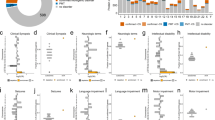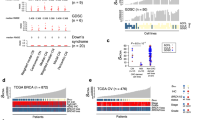Abstract
The human chromosome X is closely associated with congenital disorders and mental retardation (MR), because it contains a significantly higher number of genes than estimated from the proportion in the human genome. We constructed a high-density and high-resolution human chromosome X array (X-tiling array) for comparative genomic hybridization (CGH). The array contains a total of 1,001 bacterial artificial chromosome (BACs) throughout chromosome X except pseudoautosomal regions and two BACs specific for Y. In four hybridizations using DNA samples from healthy males, the ratio of each spotted DNA was scattered between −3SD and 3SD, corresponding to a log2 ratio of −0.35 and 0.35, respectively. Using DNA samples from patients with known congenital disorders, our X-tiling array was proven to discriminate one-copy losses and gains together with their physical sizes, and also to estimate the percentage of a mosaicism in a patient with mos 45,X[13]/46,X,r(X)[7]. Furthermore, array-CGH in a patient with atypical Schinzel-Giedion syndrome disclosed a 1.1-Mb duplication at Xq22.3 including a part of the IL1RAPL2 gene as a likely causative aberration. The results indicate our in-house X-tiling array to be useful for the identification of cryptic copy-number aberrations containing novel genes responsible for diseases such as congenital disorders and X-linked MR.
Similar content being viewed by others
Log in or create a free account to read this content
Gain free access to this article, as well as selected content from this journal and more on nature.com
or
Reference
Antich J, Manzanares R, Camarasa F, Krauel X, Vila J, Cusi V (1995) Schinzel-Giedion syndrome: report of two sibs. Am J Med Genet 59:96–99
Bauters M, Van Esch H, Marynen P, Froyen G (2005) X chromosome array-CGH for the identification of novel X-linked mental retardation genes. Eur J Med Genet 48:263–275
Bejjani BA, Saleki R, Ballif BC et al (2005) Use of targeted array-based CGH for the clinical diagnosis of chromosomal imbalance: is less more? Am J Med Genet 134:259–267
Carrié A, Jun L, Bienvenu T et al (1999) A new member of the IL-1 receptor family highly expressed in hippocampus and involved in X-linked mental retardation. Nat Genet 23:25–31
Cowell JK, LaDuca J, Rossi MR, Burkhardt T, Nowak NJ, Matsui S (2005) Molecular characterization of the t(3;9) associated with immortalization in the MCF10A cell line. Cancer Genet Cytogenet 163:23–29
Culic V, Resic B, Oorthuys JW, Overweg-Plandsoen WC, Hennekam RC (1996) A Croatian patient of the Schinzel-Giedion syndrome. Genet Couns 7:21–25
Ferrante MI, Ghiani M, Bulfone A, Franco B (2001) IL1RAPL2 maps to Xq22 and is specifically expressed in the central nervous system. Gene 275:217–221
Hayashi S, Kurosawa K, Imoto I, Mizutani S, Inazawa J (2005) Detection of cryptic chromosome aberrations in a patient with a balanced t(1;9)(p34.2;p24) by array-based comparative genomic hybridization. Am J Med Genet 139:32–36
Honda S, Hayashi S, Kato M et al (2007) Clinical and molecular cytogenetic characterization of two patients with non-mutational aberrations of the FMR2 gene. Am J Med Genet (in press)
Inazawa J, Saito H, Ariyama T, Abe T, Nakamura Y (1993) High-resolution cytogenetic mapping of 342 new cosmid markers including 43 RFLP markers on human chromosome 17 by fluorescence in situ hybridization. Genomics 17:153–162
Inazawa J, Inoue J, Imoto I (2004) Comparative genomic hybridization (CGH)-arrays pave the way for identification of novel cancer-related genes. Cancer Sci 95:559–563
Jin H, Gardner RJ, Viswesvaraiah R, Muntoni F, Roberts RG (2000) Two novel members of the interleukin-1 receptor gene family, one deleted in Xp22.1-Xp21.3 mental retardation. Eur J Hum Genet 8:87–94
Jones KL (2006) SMITH’s recognizable patterns of human malformation. Elsevier Saunders, Philadelphia, pp 250–251
Kok K, Dijkhuizen T, Swart YE et al (2005) Application of a comprehensive subtelomere array in clinical diagnosis of mental retardation. Eur J Med Genet 48:250–262
Krantz ID, McCallum J, DeScipio C et al (2004) Cornelia de Lange syndrome is caused by mutations in NIPBL, the human homolog of Drosophila melanogaster Nipped-B. Nat Genet 36:631–635
Kubota T, Nonoyama S, Tonoki H et al (1999) A new assay for the analysis of X-chromosome inactivation based on methylation-specific PCR. Hum Genet 104:49–55
Minn D, Christmann D, De Saint-Martin A et al (2002) Further clinical and sensorial delineation of Schinzel-Giedion syndrome: report of two patients. Am J Med Genet 109:211–217
Musio A, Selicorni A, Focarelli M.L et al (2006) X-linked Cornelia de Lange syndrome owing to SMC1L1 mutations. Nat Genet 38:528–530
Panasiuk B, Midro AT, Zadrozna-Tolwinska B (1997) Earlier finishing of Xp21.2 subband replication of the inactive X chromosome in Rett syndrome girl but not in her 47,XXX mother. Clin Genet 52:120–125
Pinkel D, Segraves R, Sudar D et al (1998) High resolution analysis of DNA copy number variation using comparative genomic hybridization to microarrays. Nat Genet 20:207–211
Redon R, Ishikawa S, Fitch KR et al (2006) Global variation in copy number in the human genome. Nature 444:444–454
Rosenberg C, Knijnenburg J, Chauffaille Mde L et al (2005) Array CGH detection of a cryptic deletion in a complex chromosome rearrangement. Hum Genet 116:390–394
Saito-Ohara F, Fukuda Y, Ito M et al (2002) The Xq22 inversion breakpoint interrupted a novel Ras-like GTPase gene in a patient with Duchenne muscular dystrophy and profound mental retardation. Am J Hum Genet 71:637–645
Sana TR, Debets R, Timans JC, Bazan JF, Kastelein RA (2000) Computational identification, cloning, and characterization of IL-1R9, a novel interleukin-1 receptor-like gene encoded over an unusually large interval of human chromosome Xq22.2-q22.3. Genomics 69:252–262
Sanlaville D, Lapierre JM, Turleau C et al (2005) Molecular karyotyping in human constitutional cytogenetics. Eur J Med Genet 48:214–231
Schinzel A, Giedion A (1978) A syndrome of severe midface retraction, multiple skull anomalies, clubfeet, and cardiac and renal malformations in sibs. Am J Med Genet 1:361–375
Schoumans J, Ruivenkamp C, Holmberg E, Kyllerman M, Anderlid BM, Nordenskjold M (2005) Detection of chromosomal imbalances in children with idiopathic mental retardation by array based comparative genomic hybridisation (array-CGH). J Med Genet 42:699–705
Tabolacci E, Pomponi MG, Pietrobono R, Terracciano A, Chiurazzi P, Neri G (2006) A truncating mutation in the IL1RAPL1 gene is responsible for X-linked mental retardation in the MRX21 family. Am J Med Genet 140:482–487
Takada H, Imoto I, Tsuda HS et al (2005) Screening of DNA copy-number aberrations in gastric cancer cell lines by array-based comparative genomic hybridization. Cancer Sci 96:100–110
Tanabe C, Aoyagi K, Sakiyama T et al (2003) Evaluation of a whole-genome amplification method based on adaptor-ligation PCR of randomly sheared genomic DNA. Genes Chromosomes Cancer 38:168–176
Tonkin ET, Wang TJ, Lisgo S, Bamshad MJ, Strachan T (2004) NIPBL, encoding a homolog of fungal Scc2-type sister chromatid cohesion proteins and fly Nipped-B, is mutated in Cornelia de Lange syndrome. Nat Genet 36:636–641
Tyson C, Harvard C, Locker R et al (2005) Submicroscopic deletions and duplications in individuals with intellectual disability detected by array-CGH. Am J Med Genet 139:173–185
Veltman JA, Yntema HG, Lugtenberg D et al (2004) High resolution profiling of X chromosomal aberrations by array comparative genomic hybridisation. J Med Genet 41:425–432
Vermeesch JR, Melotte C, Froyen G et al (2005) Molecular karyotyping: array CGH quality criteria for constitutional genetic diagnosis. J Histochem Cytochem 53:413–422
Zechner U, Wilda M, Kehrer-Sawatzki H, Vogel W, Fundele R, Hameister H (2001) A high density of X-linked genes for general cognitive ability: a run-away process shaping human evolution? Trends Genet 17:697–701
Acknowledgements
We are grateful to Dr. Masahiro Ito and Dr. Fumiko Saito-Ohara for a useful discussion on a patient with DMD and PMD. We also thank Ms. Ayako Takahashi and Ms. Rumi Mori for their technical assistance. This study was supported by Grants-in-Aid for Scientific Research on Priority Areas and 21st Century Center of Excellence Program for Molecular Destruction and Reconstitution of Tooth and Bone from the Ministry of Education, Culture, Sports, Science, and Technology, Japan; and by a Grant-in-Aid from Core Research for Evolutional Science and Technology (CREST) of the Japan Science and Technology Corporation (JST).
Author information
Authors and Affiliations
Corresponding author
Rights and permissions
About this article
Cite this article
Hayashi, S., Honda, S., Minaguchi, M. et al. Construction of a high-density and high-resolution human chromosome X array for comparative genomic hybridization analysis. J Hum Genet 52, 397–405 (2007). https://doi.org/10.1007/s10038-007-0127-4
Received:
Accepted:
Published:
Issue date:
DOI: https://doi.org/10.1007/s10038-007-0127-4
Keywords
This article is cited by
-
A novel intragenic deletion in OPHN1 in a Japanese patient with Dandy-Walker malformation
Human Genome Variation (2018)
-
Concomitant microduplications of MECP2 and ATRX in male patients with severe mental retardation
Journal of Human Genetics (2012)
-
Novel intragenic duplications and mutations of CASK in patients with mental retardation and microcephaly with pontine and cerebellar hypoplasia (MICPCH)
Human Genetics (2012)
-
Commentary on ‘Identification of a microdeletion at Xp22.13 in a Taiwanese family presenting with Nance–Horan syndrome’
Journal of Human Genetics (2011)
-
Clinical application of array-based comparative genomic hybridization by two-stage screening for 536 patients with mental retardation and multiple congenital anomalies
Journal of Human Genetics (2011)



